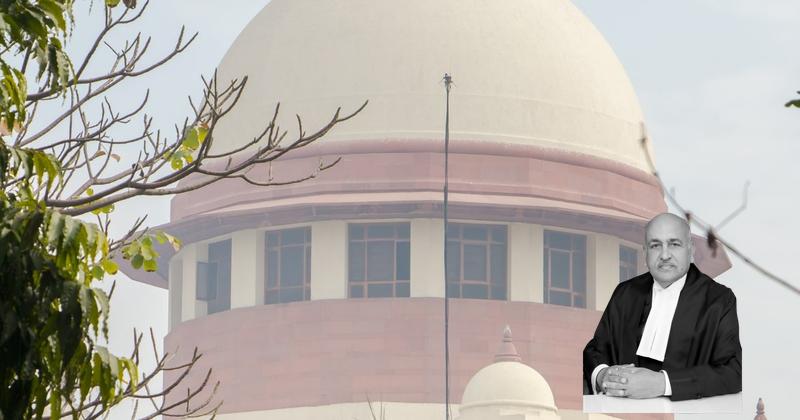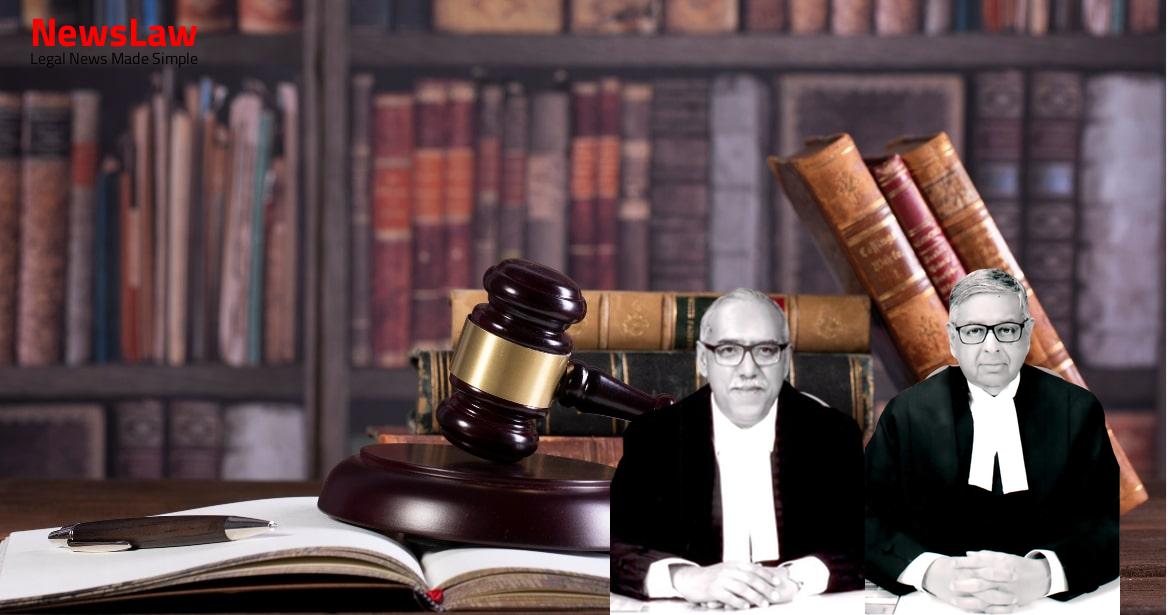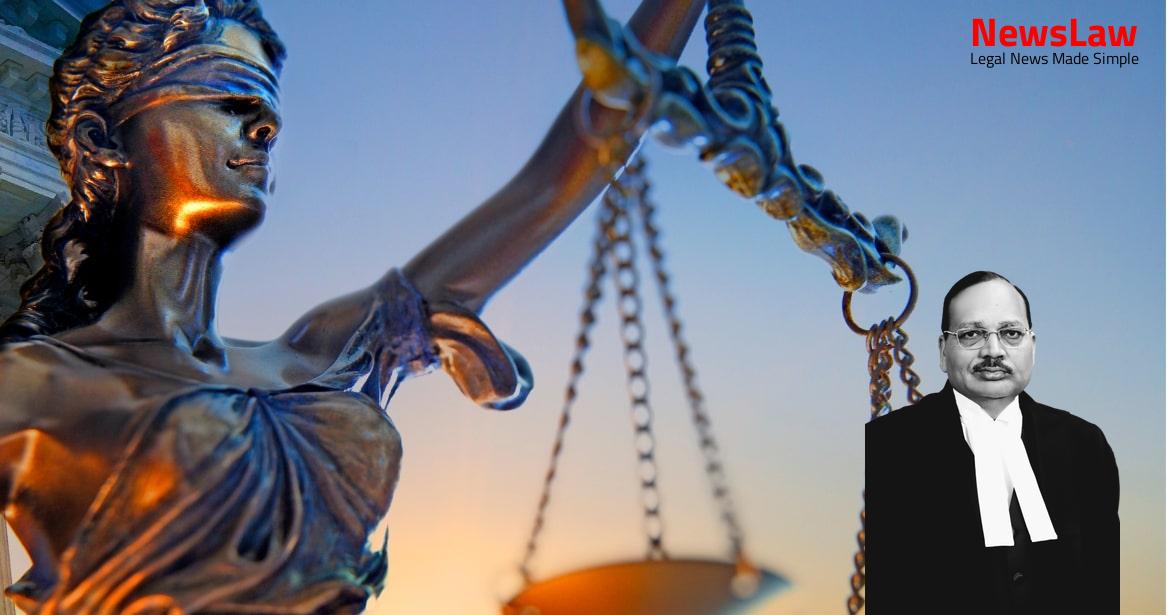2B (part) and 3B falling in S-Ward were reserved for the purpose of “ Recreation Ground ”; (ii) The aforesaid plot of land was admittedly owned by appellant No.1 herein. Appellant No.2 herein is the duly constituted attorney of appellant No.1 in respect of the said property; (iii) Under Maharashtra Act 10 of 1994, clauses (a), (b) and (c) were inserted under sub-section (1) of Section 126 of the Maharashtra Regional and Town Planning Act, 1966 ( hereinafter called “the Act” ), by way of substitution. An application for the grant of DRC was enclosed to the said letter; (vi) It is relevant to mention at this stage that the TDR to be granted in lieu of compensation for acquisition of land, as contemplated in clause (b) of sub-section (1) of Section 126 comprised of two components namely, (i) TDR equal to the area of land surrendered; and (ii) additional TDR against the development or construction of the amenity on the surrendered land at the cost of the owner; 4 (vii) Vide another letter dated 08.10.1994, the Architect of appellant No.1 wrote a letter to the Municipal Corporation, expressing their intention to develop the land sought to be surrendered; (viii) One of the conditions indicated in the said letter dated 05.04.1995 was that the appellant had to deposit a sum of Rs.3,50,000/- as security for the faithful compliance of the requirements mentioned in the letter; (xi) Appellant No.1, through their Architects, undertook the development work. Accordingly, the appellant No.1 undertook the construction of Storm Water Drains; (xiii) Thereafter, the Executive Engineer issued a communication dated 20.10.1995 certifying that the drains have been constructed satisfactorily; (xiv) As a matter of fact, the Architects of appellant No.1 had a temporary site office and godown on the plot reserved for “ Recreation Ground ”. A further scrutiny report dated 28.12.1995 acknowledged that the “ Recreation Ground ” was being developed in terms of the approval granted on 14.12.1995; (xviii) While things stood thus, the Municipal Corporation issued a Circular dated 09.04.1996, restricting the grant of additional TDR in respect of amenities such as “ Recreation Ground”, only for the structures allowed to be constructed within the reservations, to the extent of built-up area of such structures subject to a maximum of 15% area of the reservations. ; (xix)
During the pendency of the above proceedings, appellant No.1 constituted appellant No.2 as their Power of Attorney in respect of the amenity TDR (Additional TDR) under a Deed dated 24.12.1996; (xx) Claiming to have completed the development of the amenity, the appellants applied on 17.04.1998 for the grant of Additional TDR (also known as “ Amenity TDR ”); 7 (xxi)
But by a reply dated 27.11.1998, the Corporation declined to consider the request for additional TDR on the ground of prevailing policy ( namely, the Circular dated 09.04.1996 ); (xxii) Since the Circular was under challenge before this Court, appellant No.1 awaited the outcome of the challenge; (xxiii) Therefore, after the circular was set aside by this Court in the decision in Godrej and Boyce Manufacturing Company Limited (supra), the appellant made one more request for the grant of Additional TDR by a letter dated 03.11.2009.
While rejecting the claim of the appellants, the High Court recorded the following findings: (i) that a claim for Additional TDR generally arises in terms of clause 6 of Appendix VII of Regulation 34 of the Development Control Regulations for Greater Mumbai, 1991 ; (ii) that the entire correspondence exchanged between the appellants and the respondents from 14.07.1994 till the year 1998 does not disclose that the appellants intended to avail additional TDR in terms of clause 6; 8 (iii) that if there was any such intention, the owner ought to have approached the Commissioner or the Appropriate Authority in terms of clause 6 of Appendix VII; (iv) that the Superintendent of Gardens was not the appropriate authority in respect of the Garden Department; (v) that what was claimed by appellant No.1 and their Architects was only TDR as per clause 5 and not additional TDR under clause 6 of Appendix VII of Regulation 34; (vi) that the appellants accepted DRC dated 02.01.1996 without any protest; (vii) that the appellants have failed to establish that they carried out any development; (viii) that the agreement executed between M/s Mayfair Housing and the Corporation shows that the appellants merely surrendered the land and claimed TDR in terms that before claiming additional TDR in terms of clause 6, neither appellant No.1 nor appellant No.2 filled in the printed Form; (xiii) that under clause 6, the amenity has to be developed as per the stipulations prescribed by the Commissioner or the appropriate authority, but in this case, these authorities did not prescribe any stipulations, since the appellants did not submit any printed Form for additional TDR; (xiv) that appellant No.2 is not the owner or lessee of the land and hence when appellant No.2 made a request for the development/maintenance of the land, the request was granted on condition that appellant No.2 will not claim any TDR; and (xv) that in any case the appellants should be deemed to have abandoned their claim for additional TDR, in view of the fact that they came up with the writ petition only in the year 2010 challenging the rejection of the request for additional TDR made in the year 1998 and that, therefore, the writ petition deserves to be dismissed. Chidambaram, learned senior counsel: (i) that TDR/Additional TDR, constitute compensation in kind for the acquisition of the land and the development of the amenity and hence the denial of the same will be an infringement of the right to property guaranteed under Article 300A of the Constitution; 10 (ii) that there is no dispute that the appellants developed the “ Recreation Ground,” in terms of the plan approved by the Superintendent of Gardens; (iii) that the High Court overlooked the approval granted by the Municipal Commissioner which was available on record and hence the finding that the appropriate authority did not grant approval is factually incorrect; (iv) that in terms of Regulation 6, the amenity is required to be developed “ on the surrendered plot ” and the vesting in favour of the Corporation takes place only after the development of the amenity in terms of Section 126(1)(b); (v) that the stand taken by the Corporation before the High Court that the appellant did not develop the amenity, was an afterthought; (vi) that the request for Additional TDR made by the appellants on 17.04.1998 was rejected by the Corporation by a communication dated 27.11.1998, not on the ground that the appellants did not develop the amenity, Nadkarni, learned senior counsel:- (i) that after going through the entire correspondence between the parties, the High Court has recorded findings of fact on various aspects such as the appellants not undertaking the development of any amenity, the appellants not making any claim for Additional TDR and the lack of approval on the part of the appropriate authority for the development of any amenity; (ii) that these findings of fact do not warrant any interference under Article 136 of the Constitution; (iii) that the rejection of the request for additional TDR, made on 27.11.1998 was challenged by the appellants only after 12 years and hence the High Court was justified in drawing an inference about the abandonment of claim; (iv) that after the surrender and transfer of the land in favour of the Corporation and the grant of TDR, the appellants ceased to be owners and hence they were not entitled to claim additional TDR; (v) that the claim for Additional TDR should be made simultaneously with the claim for TDR, but the appellants failed to do so; (vi) that the appellants made a claim for Additional TDR only in 1998 after surrendering and transferring the land in the year 1995; 12 (vii) that in any case, the From the rival contentions, it appears to us that the following two questions arise for our consideration: (I) Whether the High Court was right in concluding that there was abandonment of claim by the appellants?
The said circular dated 09.04.1996 dealt with several issues, one of which related to Additional TDR for open space amenities. The application for additional Development Right in respect of the above mentioned amenities will be considered only for the structures allowed to be constructed within the reservations as per the provisions of D.C.R. Therefore, taking advantage of the said decision, appellant No.2 applied once again for the grant of Additional TDR, on 03.11.2009. The Circular came under challenge before this Court and the decision of this Court in Godrej and Boyce Manufacturing Company Limited was delivered on 06.02.2009.
Therefore, the finding recorded by the High Court on question No.1 is not in tune with the law or the facts of the present case and hence question No.1 has to be answered in favour of the appellants herein. Let us first take note of the statutory provisions, out of which the right to claim additional TDR arose. Section 126(1) of the Act reads as follows: “126. The methods of acquisition 19 prescribed in clauses (a), (b) and (c) of sub-section (1) of Section 126, in simple terms are as follows:- (i) The acquisition may be through an agreement entered into with the owner, by paying an amount agreed to; (ii) Alternatively, the acquisition may be by the grant of FSI or TDR in lieu of any payment, along with Additional FSI or Additional TDR against the development or construction of the amenity on the surrendered land at the cost of the owner; or (iii) Under this clause, the owner and the planning authority are granted the leverage to agree that the compensation for the acquisition of the land will be for a consideration, not paid in the form of cash but granted in kind, in the form of two things, namely, (i) FSI or TDR for the area of land surrendered; and (ii) additional FSI or additional TDR against the development or construction of the amenity on the surrendered land. The last limb of clause (b) extracted above shows that the owner of the land is under an obligation to develop or construct the amenity on the surrendered land at his cost and the Planning Authority has to reciprocate the same by granting Additional FSI or Additional TDR. The word “ amenity” has been defined in Section 2(2) of the Act to mean several things including “Recreational Grounds”.
Interestingly, it is not the 22 case of the respondents that the appellants were required to develop something else and not a Recreational Ground. This has become necessary in view of the fact that the last limb of clause (b) extracted above refers to “ the Final Development Control Regulations prepared in this behalf”. Transfer of Development Rights:-
In certain circumstances, the development potential of a plot of land may be separated from the land itself and may be made available to the owner of the land in the form of Transferable 24 Development Rights (TDR). When an owner or lessee also develops or constructs the amenity on the surrendered plot at his cost subject to such stipulations as may be prescribed by the Commissioner or the appropriate authority, as the case may be and to their satisfaction and hands over the said developed/ constructed amenity to the Commissioner/ appropriate authority, free of cost, he may be granted by the Commissioner a further DR in the form of FSI equivalent to the area of the construction/development done by him, 25 of which etc. Therefore, it is necessary to go back to certain factual details to find out (i) whether appellant No.1 did develop the amenity; and (ii) whether they made a claim traceable only to clause 5 and not to clause 6 of Appendix VII to the Regulations read with Regulation 34. To this letter, a set of drawings prepared after incorporating the suggestions of the Department was also enclosed; (iv) By a departmental note dated 03.12.1994, the Superintendent of Gardens seems to have addressed the Executive Engineer (DP)(ES) indicating that the plan submitted by the Architect was slightly modified after visiting the site. The second is that the letter was described as an intent letter valid for a period of one year, but eligible to be revalidated for further periods; (vii) By a letter dated 27.05.1995, the Deputy Chief Engineer (Planning and Design) informed the Architects that the work undertaken by them was found completed as per the amended plan approved by the Department and as per the re- location approved by the Director (ES & P). (ix) By a departmental note dated 30.11.1995, the Deputy Chief Engineer sought the approval of Municipal Commissioner on certain issues. (xi) After the handing over and taking over possession of the land, the Superintendent of Gardens sent a communication date 14.12.1995 to the Architect of appellant No.1 that they have no objection to the landscaping being undertaken. By the other deed of power of attorney, appellant No.1 authorized their duly constituted attorneys to seek the grant of “ Amenity TDR ” also known as Additional TDR.
(xix) Thereafter, a communication was issued to Mayfair Housing, with reference to the letter of appellant No.2 dated 30 20.11.1996, informing them that the development and maintenance of the Recreation Ground on payment of nominal fee has been sanctioned, subject to certain conditions, one of which was that no TDR will be given. The entire correspondence that began with a letter dated 14.07.1994 sent by Worthy Enterprises, the Architects of appellant No.1 to the Chief Engineer (DP) of the Municipal Corporation and culminating in the letter of appellant No.2 dated 17.04.1998 seeking the grant of additional TDR, can be split into two time zones. (ii)
The above answer to question No.17, in Form No.2625 submitted by appellant No.1 themselves along with their letter dated 14.07.1994, stands in stark contrast, to the answer to the very same question in the Form submitted by appellant No.2 along with the letter dated 17.04.1998. (iv) For instance, in the letter dated 08.10.1994, Worthy Enterprises sought permission to develop the Recreation Ground reservation by suitably cutting, levelling, filling and terracing etc. But there is no whisper in the said letter about additional TDR; (v) However, an endorsement is made in the internal department note dated 03.12.1994 asking the officer concerned to “ inform the developer that he can develop the RG by availing ATDR.” But it must be remembered at this stage that the claim of appellant No.1 for TDR by surrendering the land itself was pending consideration and the offer for levelling, cutting etc., seem to have been made for the purpose of convincing the Corporation to accept the surrender of land and to grant TDR.
Till this letter, there was no mention about any “ additional amenity ” and all the activities of development agreed to be undertaken or actually undertaken were for the purpose of convincing the Corporation to accept the land and grant TDR; (vii) Even internal note dated 30.11.1995 speaks about conditions for the grant of DRC towards TDR and not about additional TDR; (viii) A perusal of the possession receipt dated 09.12.1995 contains a description of the subject matter as follows:- “Grant of DRC in lieu of land….” This possession receipt notes that a compound wall with a gate has been provided and that the D.P. (ix) If cutting, filling, levelling, terracing etc., formed part of the development of the amenity for gaining additional TDR, there was no necessity for appellant No.1 to have got into a tie-up with appellant No.2, the partner of Mayfair Housing and that too after the handing over of possession. If the development of amenity had already taken place, there was nothing for Mayfair Housing to do and yet they seek by a letter dated 20.11.1996 permission to develop and maintain a garden; (xi) A list of works to be carried out for the purpose of maintenance of the garden annexed to the note of the Deputy Municipal Commissioner shows that they were primarily for the maintenance of the existing facilities; (xii) Another conundrum evidenced by the documents is that the second deed of Power of Attorney dated 24.12.1996 authorises the power agent to apply for getting permission from the authorised department of the Corporation for the construction of Recreation Ground. To carry out, from time to time, construction of the Recreation Ground or such other construction/development as may be required by the Municipal Corporation of Greater Bombay in phase/phases, in terms of the plans approved by the Municipal Corporation of Greater Bombay. But unfortunately, the Corporation made it clear to Mayfair Housing represented by appellant No.2 herein that he will not be entitled to Additional TDR, for the development of Recreation Ground.
Realising this difficulty, they appear to have got 2 deeds of PoA from appellant No.1 so as to 37 piggy ride on appellant No.1. If all those activities up to the date of handing over possession constituted development of amenity, there was no necessity for appellant No.1 to give PoA to appellant No.2 to undertake the activity of development of amenity and to seek Additional TDR.
Case Title: GODREJ AND BOYCE MFG.CO.LTD. Vs. MUN.CORP.OF GR.MUMBAI . (2023 INSC 504)
Case Number: C.A. No.-009021-009021 / 2014



